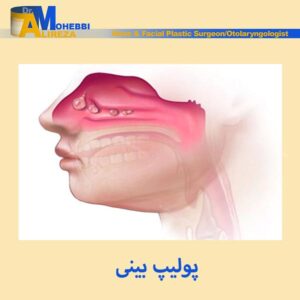Introduction
Nasal breathing without difficulty is a complex matter and is influenced by several factors.
There are various objective tests for nasal airway assessment to help physicians in understanding nasal airway function. Acoustic rhinometry was first described by Hilberg in1989. It is one of the most commonly-used tests for objective measurements of nasal airway.1,2
This test has the ability to measure the volume and the nasal cross-sectional area at various distances. It can also determine the site of nasal minimal cross-sectional area.1
Acoustic rhinometry equipment presents a shock wave to the nasal airway and then by measuring the reflected sound, a profile of the cross-sectional areas through each side of the nose may be obtained. Changes in the cross-sectional area of the nose cause changes in acoustic impedance that affect the reflection of the sound.1
This test defines the site of obstruction in the nasal airway. This is a helpful way for diagnosis of nasal obstructing diseases such as rhinitis, snoring, and tumors. It is also useful for comparing preoperative and postoperative results in nasal surgeries.1–5
The normal value of the variables measured by acoustic rhinometry test, for example cross-section and nasal volume may be influenced by various factors including race, age, sex, height, weight, and smoking habit. Race is the most important factor.1,6,7
Within the past years, there had been various studies about the acoustic-rhinometry test for defining normal values of nasal volume and cross-section in different races, objective assessment of postoperative results of nasal surgeries, and evaluation of the effect of sex,age, height, and weight on the mentioned variables.4,5
Having considered that these normal values vary in different races and there has been no study on determining these normal values in Iranian population up to now, this study was done to provide normal values of nasal volume in a sample of adult Iranians without nasal breathing complaint. This study also evaluated the correlation between those variables and age, sex, height, weight, and smoking habit.
The differences of nasal volume and cross-section between the individuals with normal nasal examination and the individuals with abnormal nasal examination (such as minimal septal deviation, turbinates hypertrophy, and mucosal diseases) but without nasal breathing complaint, were also assessed.
Materials and Methods
This was a cross-sectional study. In this study, with regard to sampling formula (N=z 2 s2/d2), 180 normal adult Iranians (18 – 60 years old) without nasal breathing complaint were invited by an advertisement to Rasoul Akram and Firuzgar Hospitals to take part in the study. In the sampling formula S (standard deviation) is 0.13 for nasal volume and minimal cross-sectional area due to references, Z is 1.96 for the 95% confidence level, and d is 0.02 due to references.1,2
The exclusion criteria were: history of a systemic disease, history of nasal surgery, history of allergy, sinusitis, polyposis, and history of continuous consumption of decongestant medications.
A questionnaire including age, sex, weight, height, smoking habit, and findings of nasal examination (septal deviation, turbinates hypertrophy, and mucosal disease) was completed for each individuals. The participants underwent acoustic rhinometry in a sitting position, before and after using topical decongestion (with epinephrine and lidocaine shrinkage for 10 minutes) in each side of the nasal cavity.
The first notch in the area-distance curve, named I-notch, indicates the first nasal constriction-valve or isthmus-nasiand and the second notch, named C-notch, indicates the head of inferior concha.
The less parameter in each side is minimal cross-sectional area (MCA).
Data regarding the nasal volume (0 – 5 cm), cross-sectional area, and the constriction distances in each side of the nose before and after the decongestion were recorded in SPSS software version11.5 and were statistically analyzed.
The tests included descriptive statistics, t-test, and correlation test.
Results
A total of 180 participants were examined. The mean age was 39 years (range: 18 – 60years).
There were 111 (62%) male and 69 (38%) female subjects. The mean weight of the participants was 72 kg. The mean height of the participants was 170 cm.
Table 1 shows the mean and standard deviation of all the variables in each side of the noses, before and after decongestion with confidence level of 95%.
There was a statistically significant increase in volume, MCA, area of the first, and also the second constriction after decongestion (P<0.05).
The mean total volume and the mean total MCA with 8% and 14% increasing rate, respectively reached 8.79±1.1 cm3 and 1.03±0.17 cm2, respectively after decongestion.
This increase was statistically significant.
The variables were measured in both sexes.
There was no difference in volume and MCA between the two groups (P>0.05). The only significant difference between the males and females was the distance of the first constriction (D1) from nostril that was significantly smaller in females compared with males.
This means that nasal valve in females is in a more anterior position than males.
There were 63 (35%) smokers and 117 (65%) nonsmokers. The mean volume and cross-ectional area in these two groups were measured and compared. There was no difference in the mean volume and MCA between the two groups (P>0.05).
There was no significant correlation between age, weight, and height with nasal volume and MCA of the studied participants analyzed by the correlation test (P>0.05).
There were 110 (61%) individuals with normal nasal examination and 70 (39%) participants with abnormal nasal examination. There was no difference in the nasal volume and MCA between these two groups (P>0.05).
In 45 subjects with abnormal nasal examination, the site of MCA was in the C-notch. Among these persons, 30 subjects had inferior turbinate hypertrophy or mucosal disorder, and 15 persons had only septal deviations. In the first group after decongestion, MCA transmitted to I-notch in 27 subjects (anterior shifting phenomenon). In the other 15 subjects with septal deviations, the MCA location did not change after decongestion.
In the group of participants with abnormal examination, the comparison between the narrower and wider side of the nasal cavity showed a significant difference in the volume and MCA between the two sides (P<0.05).

Discussion
There are different reports about the response of cross-sectional area of first constriction (A1) to decongestion. In some studies, it has been reported that there is an increasing response of A1 to decongestion while in some other reports no response to decongestion has been reported.8–10 It is a common belief that the increasing response of cross-sectional area of second constriction (A2) to decongestant is much greater than A1.1,9,10
This was the same in Iranian population in our study.
In our study, there was also an increase in A1 after decongestion that was statistically significant (P<0.05).
The greater response of A2 to decongestion is related to the response of the inferior turbinate mucosa to topical decongestant.
With respect to the response of A1 to decongestion, we can assume that some mucosal disorders can be considered in the differential diagnosis of valve obstructive problems. This can be used in treatment planning.
As mentioned before, there was no correlation between age, sex, weight, height, and smoking habit with nasal volume and MCA in this Iranian sample. So, there is no need to modify the mentioned data for these variables. And the results of volume and MCA can be used in all age groups, weights, heights, and also in both sex.
There are different reports about the effect of these variables on nasal volume. For example, in a study on black ethnic group, height had a direct correlation with the first constriction distance (D1),7 but in some other studies, there was no correlation between age, sex, weight, height, nasal volume, and MCA.9,10
There was a significant difference between the narrower side of the nasal cavity with obstructive pathology and the wider side in volume and MCA in our study. This finding can be used for approving the clinical findings.
With the mentioned principles, these data can be used for diagnosis of different types of rhinologic disorders, treatment planning (medical and surgical), and comparing the preoperative with postoperative results of rhinologic surgeries.
Objective measurements of the patients’ satisfaction from treatment can also be evaluated.
References
- Zeiders JW, Pallanch JF, Mc Caffery TV. Evaluation of nasal breathing function with objective airway testing. In: Cummings CW, Flint PW, Harker LA, Haughey BH, Richardson MA, Robbins RT, eds. Otolaryngology Head and Neck Surgery. 4th ed. Baltimore: Elsevier; 2005: 898 – 930.
- Paula- Santos R. Pre- and postfunctional endoscopic sinus surgery nasal cavity volume assessment by acoustic rhinometry. Rev Bras Otorhinol. 2006; 72: 549 –553.
- Lam DJ, James KT, Weaver EM. Comparison of anatomic, physiologic, and subjective measures of the nasal airway. Am J Rhinol. 2006; 20: 463 – 470.
- Ouriques DM, Carlini D, Fujita R, Pignatari SS, Weckx LL. Correlation between fiberoptic nasal endoscopy and acoustic rhinometry in adults without nasal complaints. Am J Rhinol. 2006; 20: 375 – 378.
- Nigro CE, Nigro JF, Voegels RL, Mion O, Mello Junior JF. Acoustic rhinometry: anatomic correlation of the first two notches found in the nasal echogram. Rev Bras Otorhinolaryngol (Engl Ed). 2005; 71: 149 – 154.
- Huang ZH. Evaluation of nasal cavity by acoustic rhinometry in Chineses, Maly, and Indian ethnic groups. Acta Otolaryngol. 2001; 121: 844 – 848.
- Coery JP. Normative standards for nasal cross-sectional areas by race as measured by acoustic rhinometry. J Otolaryngol Head Neck Surg. 1998; 119: 389 –393.
- Gurr P. Acoustic rhinometry of the Indian and anglo-saxon nose. Rhinology. 1996; 34: 156 – 159.
- Morgan NJ. Racial differences in nasal fossa dimensions determined by acoustic rhinometry. Rhinology. 1995; 33: 224 – 228.
- Grymer LF. Acoustic rhinometry values from adults with subjective normal nasal patency. Rhinology. 1991; 29: 35 – 47.





